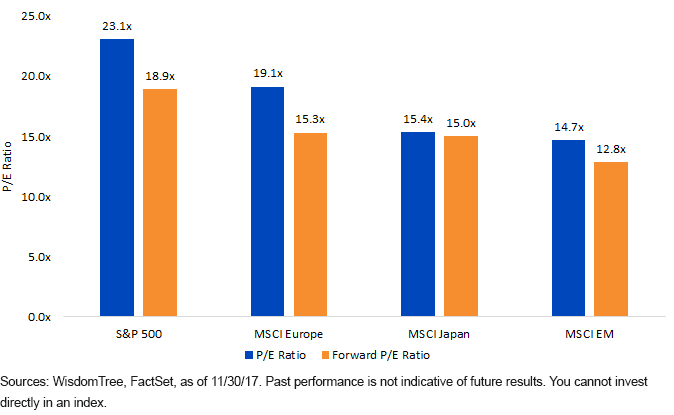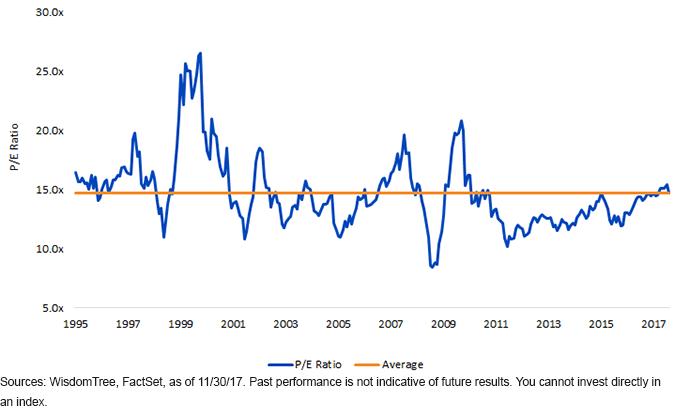Barring unforeseen circumstances, later this January marks the two-year anniversary of the start of the current emerging markets (EM) bull market. Since bottoming out on January 21, 2016, the MSCI Emerging Markets Index has rallied an impressive 70%. While some investors may be becoming hesitant on the asset class after the expansion in valuations, we see others remaining bullish on its outlook.
As value investors, we are constantly assessing asset valuations and searching for where the best opportunities exist. Looking across the globe right now, we think EM still represents the best equity valuation opportunity on an absolute and relative basis.
Global Equity Index Valuations

Value Is More Than Just a Number
That said, context is needed to tell the whole story. Value investing requires more than just looking at a group of numbers at a given point in time and selecting the smallest one.
EM is currently trading almost exactly at its long-term average P/E ratio dating back to the mid-1990s—a span of time that includes periods of boom and bust for the asset class. Even with the 70% rally over the last two years, EM is right at its historical fair value.
MSCI EM Index Historical Valuations

Equity Transformation Leading Economic Transformation
While EM’s current valuation paints a picture of fair value, we think there’s a more important story taking place beneath the surface that isn’t receiving enough recognition. Much fanfare has been made about the gradual transition within EM from the old economies to new ones, but less ink has been spilled on the fact that the equity markets have already seen this transformation take place.
For much of its history, the EM equity asset class was dominated by some of the sectors that are traditionally associated with value investing—Financials, Energy and Materials (the latter two being the primary commodity-linked sectors). This was particularly true during the mid-2000s commodity super cycle, when those three sectors combined for a whopping 58% weight in the Index at their peak. In recent years, the asset class has matured to one with larger exposures in the new economy sectors that are more closely aligned with growth investing—namely Tech and Consumer Discretionary.













Leave A Comment